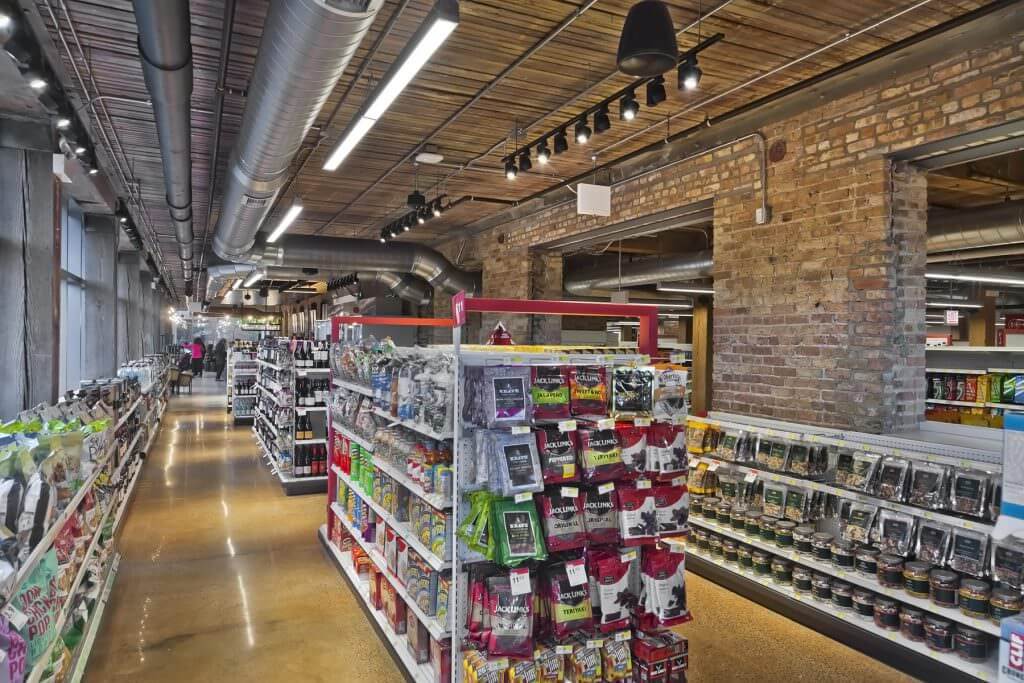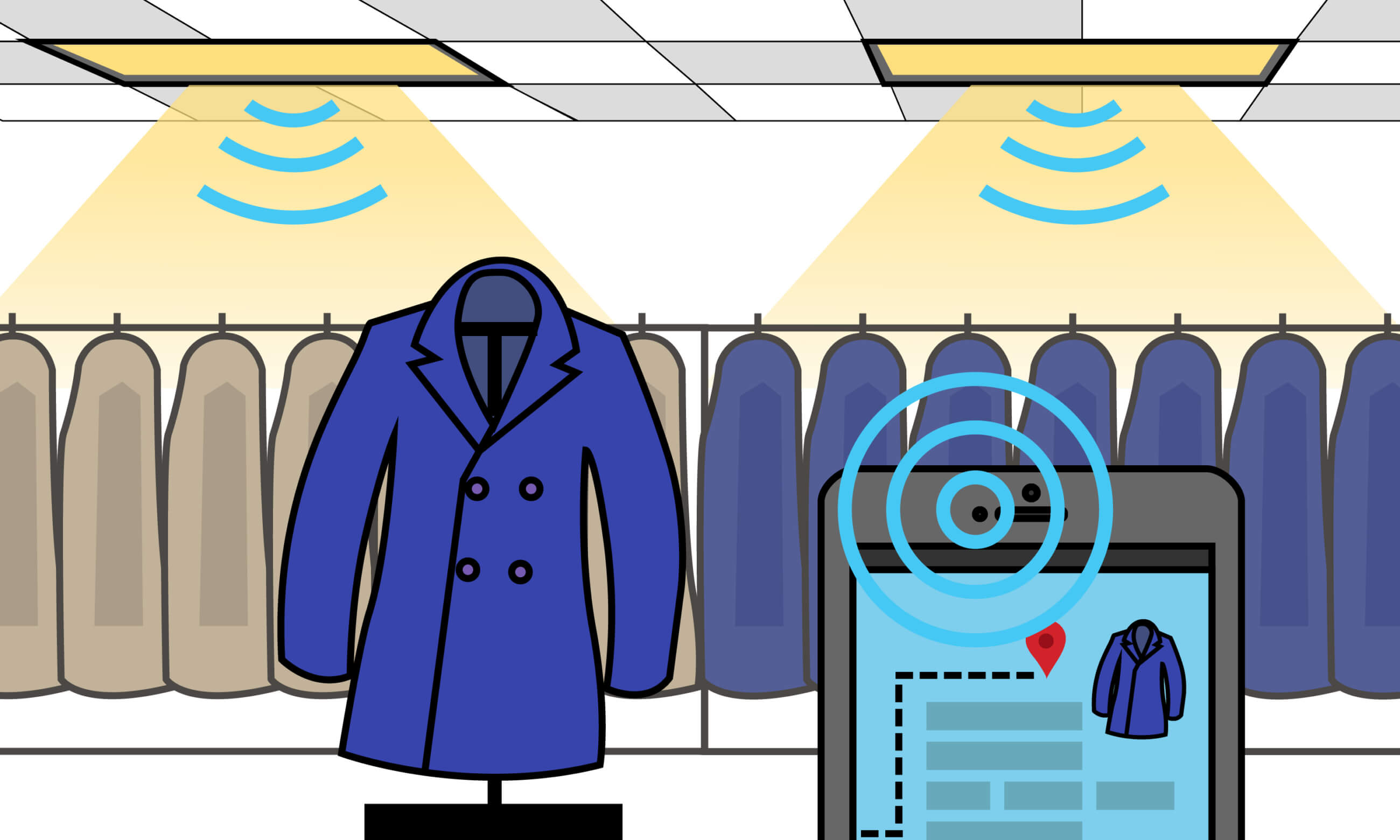With 95 percent of adults carrying phones, retailers know their customers will be more motivated than ever by tech-forward convenience this holiday season and beyond. To respond to this growing need, companies have gotten a jump on bringing intuitive new tech into their businesses – and into their store lighting. For retailers considering consumers, “convenience is money”.
Gone are the days in which lighting is meant to simply keep people out of the dark. Retail stores are now installing “smart” lighting systems taking advantage of Visible Light Communication (VLC) and Bluetooth Low Energy (BLE) technology. This smart lighting allows LED light fixtures to wirelessly communicate with the cameras and antennas in cell phones. The premise is similar to satellites in space communicating with your car navigation. Each light fixture acts as a small satellite communicating to phones below. A regular layout of lights ensures thorough sales floor coverage. While the VLC component communicates only when the phone is visible, the BLE component can reach phones tucked away in pockets or bags.
“Advances in digital lighting are giving retailers more tools than ever to drive revenue, serve customers, and enhance the shopping experience,” explains Jered Widmer, Principal with The Lighting Practice. “These new technologies are exciting and just the tip of the iceberg when it comes to future potential.”
This smart lighting technology offers benefits to both the retailer and the shopper. For retailers, the data collected allows them to understand how customers shop their stores and better place products to increase sales. For customers, it can provide turn-by-turn navigation to pre-populated shopping lists, make instant requests for associate help, and find special sales and savings using location-based notifications. The BLE technology also works with exterior lighting and has potential applications to extend the digital customer experience even further.

Major retailers, like Target, are already implementing IPS technology in their stores. Target Streeterville (pictured) uses BLE technology paired with a mobile app to improve the customer experience.
In the near future, products embedded with BLE trackers will allow the products to communicate with the system. This will let retailers better understand inventory levels, locate product in dense stockrooms, and even allow customers to complete the checkout process without waiting in any lines – using their cell phone to pay as they walk out the door. Like Amazon’s new prototype of this concept, a digital shopping cart will log items customers pick up and remove them if they put them back.






